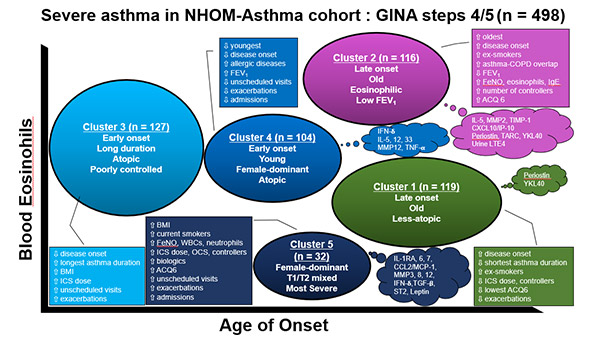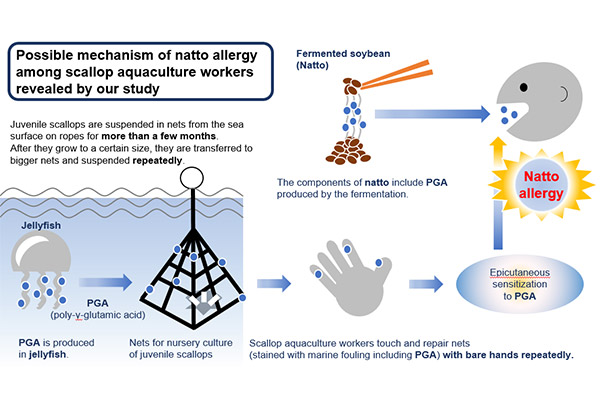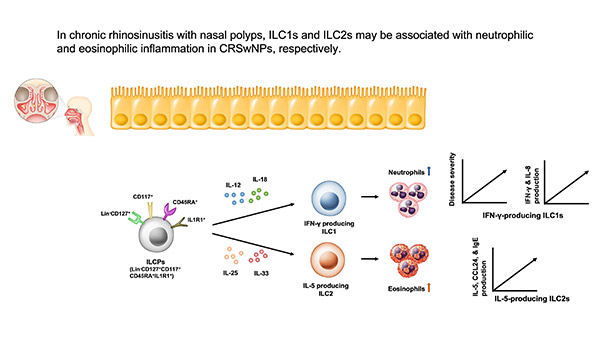Volume 72, Issue 1 (January 2023)
Editor's Choices
Editor’s comment: Asthma is a heterogeneous disease. Therefore, phenotyping is crucial for understanding the pathogenesis of the disease and for selecting the appropriate treatment. Suzukawa et al. phenotyped asthma patients in Japan using a nationwide cohort study and identified five clusters: 1) late-onset, old, less atopic; 2) late-onset, old, eosinophilic, low FEV1; 3) early-onset, long duration, atopic, poorly controlled; 4) early-onset, young, female-dominant, atopic; and 5) female-dominant, T1/T2-mixed, most severe. They also found that molecular biomarkers such as IL-1RA, YKL40/CHI3L1, IP-10/CXCL10, RANTES/CCL5, and TIMP-1 may be helpful for asthma phenotyping.
Editor’s comment: Natto allergy causes late-onset anaphylaxis. Epicutaneous sensitization to poly-ɣ-glutamic acid (PGA) by jellyfish stings is well known to contribute to the sensitization. Kurotori et al. conducted a chart review of inpatients diagnosed with anaphylaxis due to natto and self-report questionnaires about food hypersensitivity reactions filled out by Japanese fishery workers. They found that scallop aquaculture is associated with natto allergy and that experience in repairing nets may cause sensitization to PGA.
Editor’s comment: Group 2 innate lymphoid cells (ILC2s) contribute to the pathogenesis of various allergic or eosinophilic diseases, including eosinophilic chronic rhinosinusitis with nasal polyps (CRSwNPs). Kim et al. investigated other ILC subsets in the pathogenesis of CRSwNPs and found that IFN-ɣ-producing ILC1s are increased in non-eosinophilic NPs and positively correlated with the frequency of neutrophils. They also found that ILC precursors are identified in NP tissues and differentiated into IFN-ɣ–producing ILCs in response to IL-12 and IL-18, suggesting their contributive role in the pathogenesis of neutrophilic CRSwNPs.





